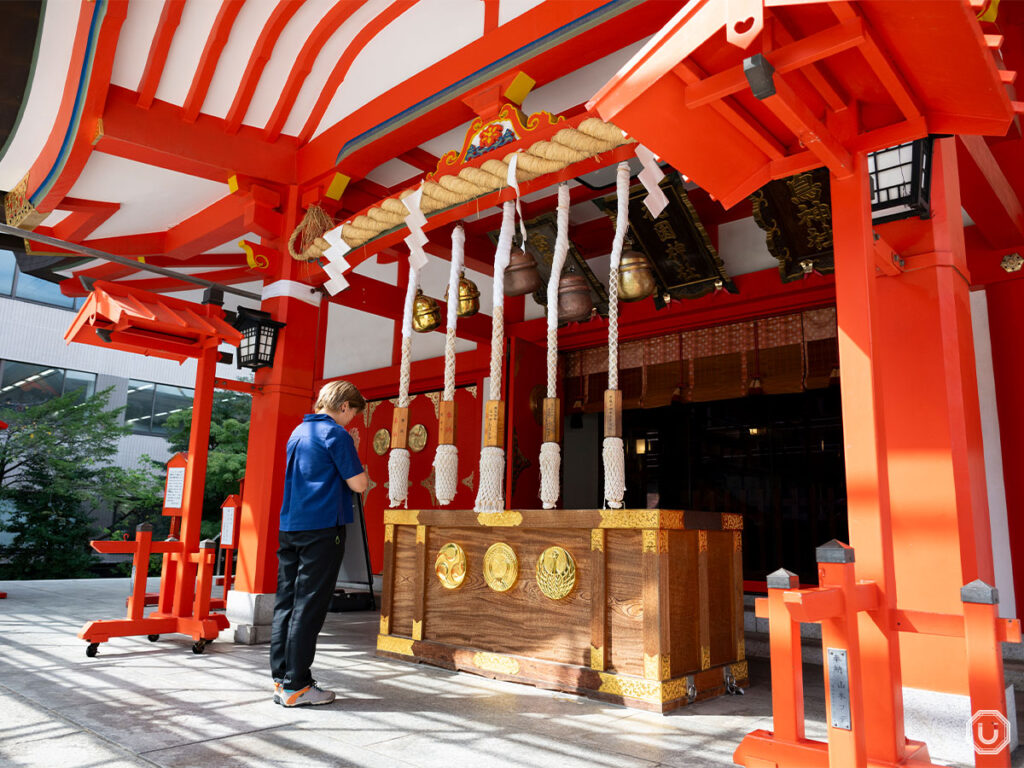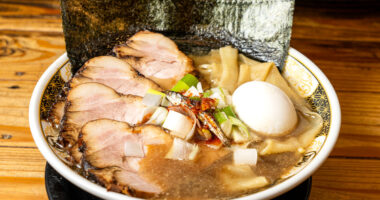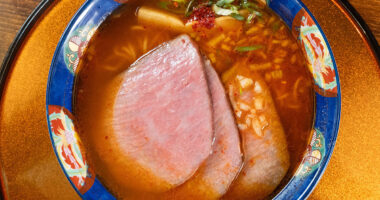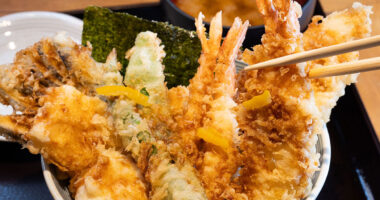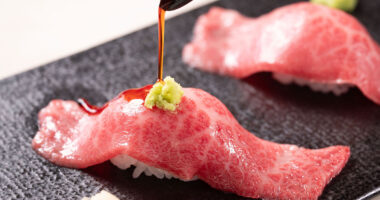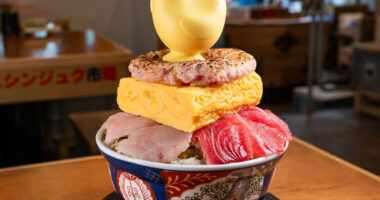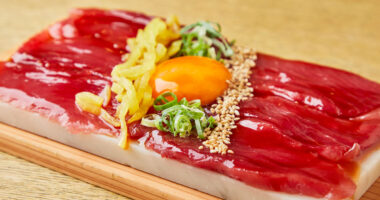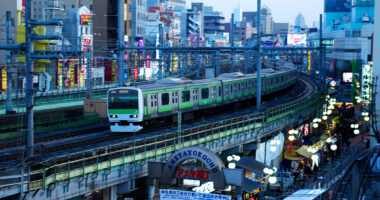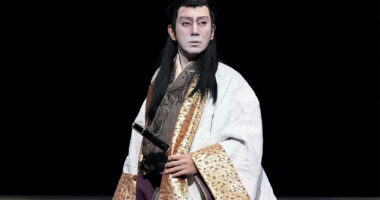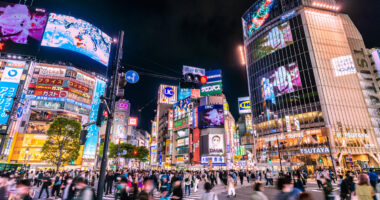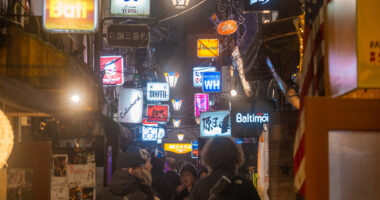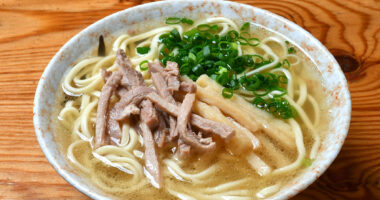Shinjuku is a lively area of Tokyo, teeming with activity day and night, and a hotspot for tourists. But did you know that within walking distance from Shinjuku Station, there’s a historic shrine waiting to be discovered? Hanazono Shrine is renowned as a place of worship for local shop owners, office workers, and even entertainers.
And yet, you might be surprised how many people would say, “I go to Shinjuku often, but I’ve never been there.”
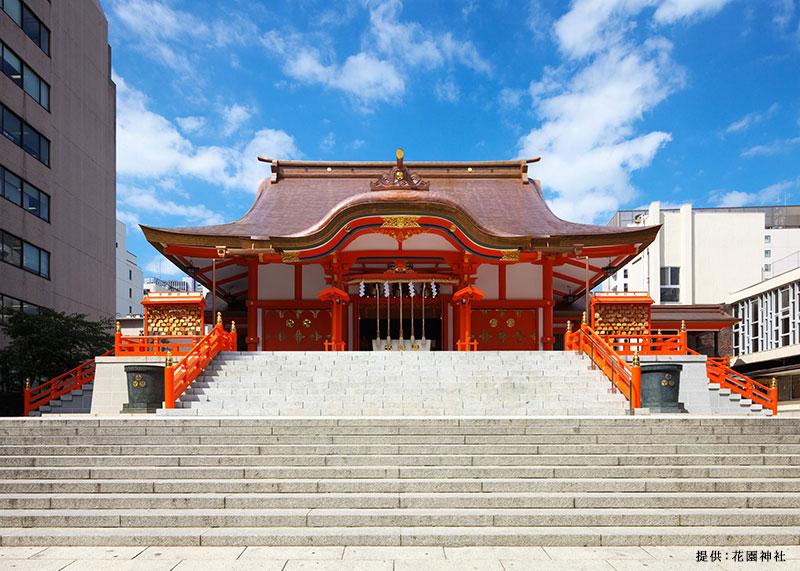
Main worship hall
A spacious sanctuary a step away from major Tokyo thoroughfares
Hanazono Shrine has two entrances. The main approach is from Meiji-dōri Avenue, where a striking red torii gate serves as a welcoming landmark. The shrine’s history stretches back to before the Edo period, when it was revered as a guardian presence in Shinjuku.
The grounds are lush with greenery, creating an oasis of calm that feels worlds apart from the bustling city outside. Throughout the year, the shrine hosts events like antique markets and theatrical performances. November brings the famous Tori no Ichi festival, when visitors flock here to purchase kumade, ornate bamboo rakes believed to bring good fortune.
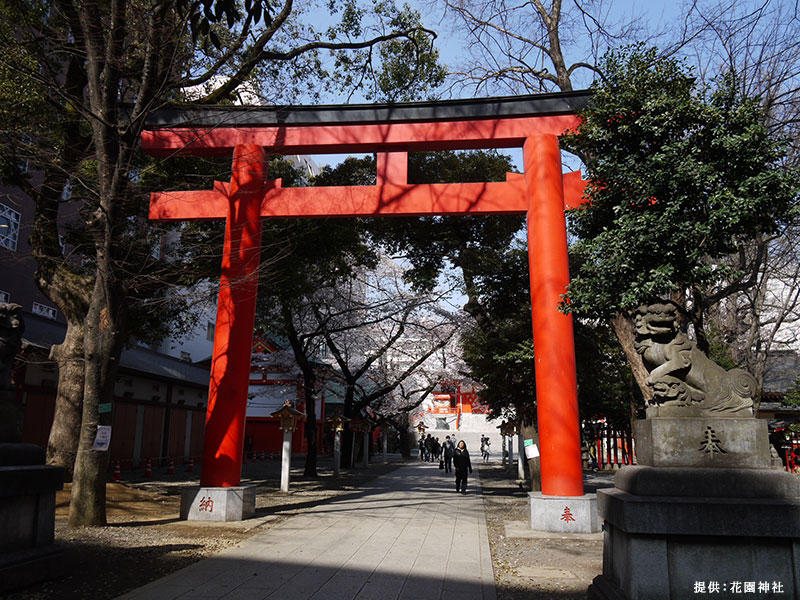
The great torii gate
The second entrance, tucked between modern buildings on Yasukuni-dōri Avenue, is a quintessentially Shinjuku scene. Step through the weathered gray torii gate, and you’ll find yourself transported to a quieter, timeless world.
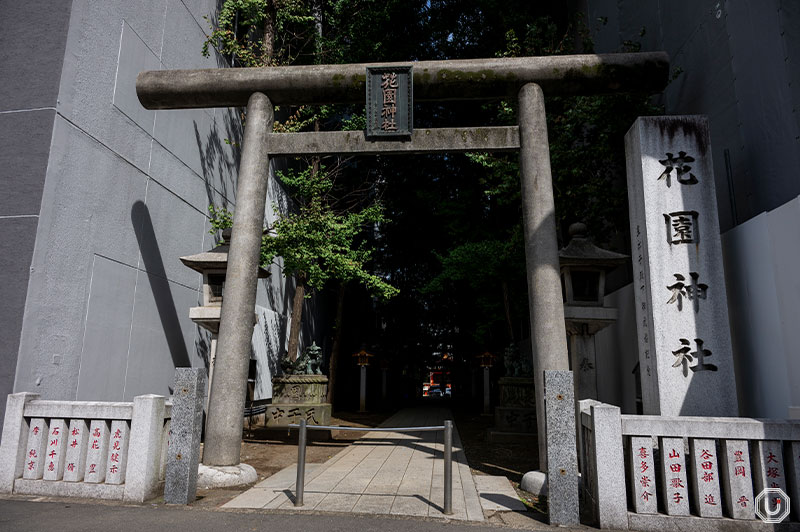
Torii gate on the Yasukuni-dori Avenue side
Near the Yasukuni-dori Avenue entrance stands a bronze statue of a karajishi, a mythical Chinese guardian lion, cast in 1821 by master craftsman Murata Seimin. This cultural treasure is registered as a tangible cultural property of Shinjuku Ward and offers a glimpse into the artistry of the past.
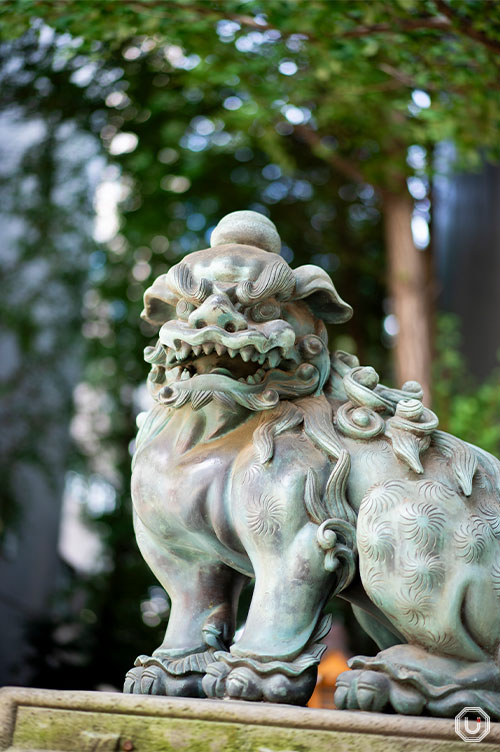
Karajishi lion statue
Begin your visit at the purification water basin called temizuya or chōzuya (meaning “hand water station”). Here, you can cleanse your hands and mouth before heading to the main worship hall to pay your respects.

Temizuya
At the main worship hall, you’ll find several bells hanging by thick ropes above the entrance. Tradition calls for worshippers to shake a rope, ringing a bell to spiritually purify themselves and alert the deities of their presence.
The proper way to pay your respects here is simple: Place a coin into the offering box, bow deeply twice, clap your hands twice, bow again, and silently make your wish.
Known for its blessings of prosperity and success, Hanazono Shrine is a popular destination for businesspeople. Even on weekdays, you’ll see a steady stream of visitors stopping by during their lunch breaks.
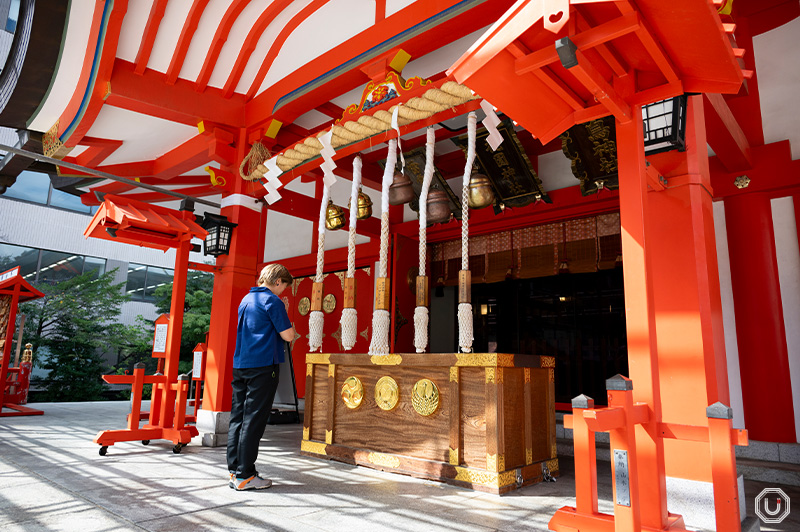
The shrine’s osamedokoro (repository) is where old ofuda (talismans made of paper, wood or cloth and considered to be imbued with the power of the deities) and kumade are respectfully disposed of. During the Tori no Ichi festival, the repository is piled high with discarded kumade, creating a striking and memorable sight.
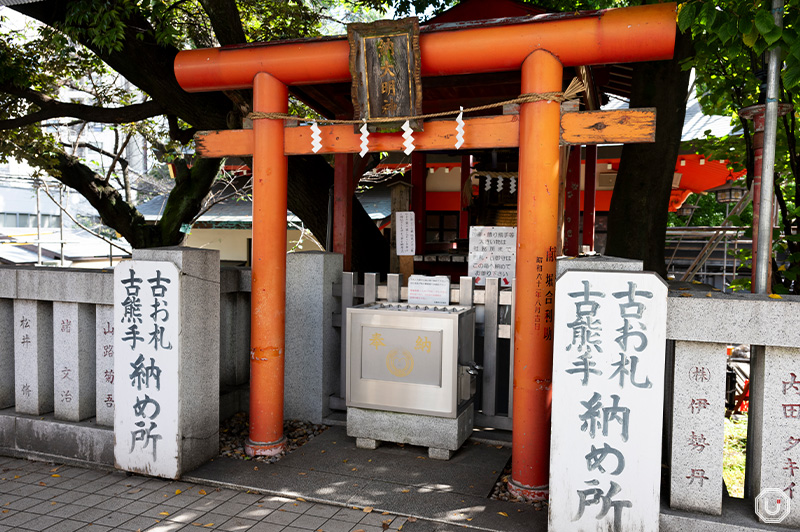
The osamedokoro
Within the grounds of Hanazono Shrine are two unique auxiliary shrines with their own distinct appeal. The first is the Itoku Inari Shrine, devoted to matchmaking and business prosperity.
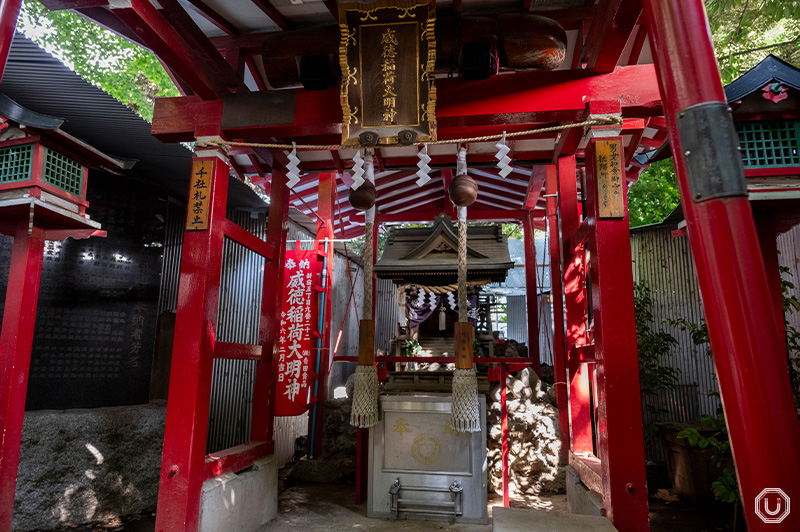
The Itoku Inari Shrine
You’ll reach it by walking down a narrow path lined with vibrant red torii gates. The short, secluded approach is as charming as the shrine itself. You should consider stopping by when you visit Hanazono Shrine.
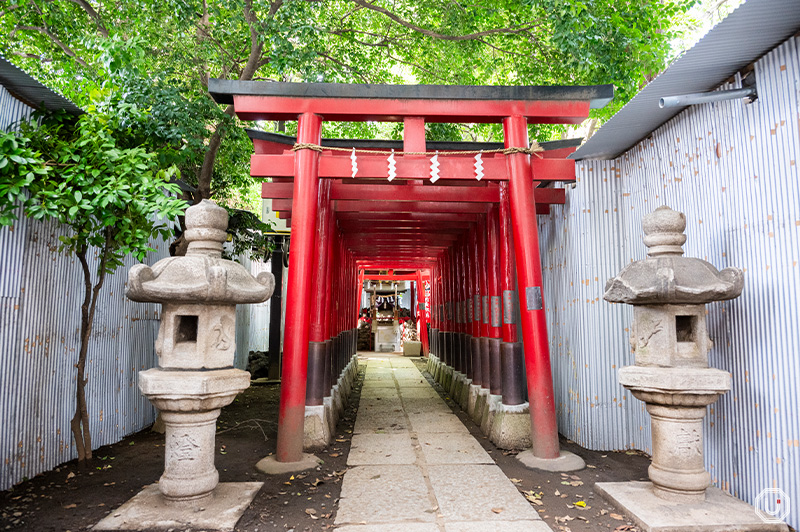
The second auxiliary shrine is the Geinō Sengen Shrine, which enshrines the god of the arts, a reflection of Hanazono Shrine’s deep historical connection to entertainment.
Since the Edo period, the shrine’s grounds were a popular site for theatrical performances and curiosity shows. This enduring legacy makes it a favored spot for entertainers to seek blessings for success in their craft. If you look closely at the plaques and offerings, you might even find the names of some well-known celebrities!
The ornate paper-cut shrine seals are very popular
Hanazono Shrine offers unique omamori (amulets available at Japanese shrines and temples and granting good luck or protection) and souvenirs. Those which are relevant to the performing arts are particularly popular.
The “Geidō Jōju Mamori” (literally “artistic career realization amulet”), designed for performers, includes a slip of paper on the back of which you can write your real or stage name for good luck.
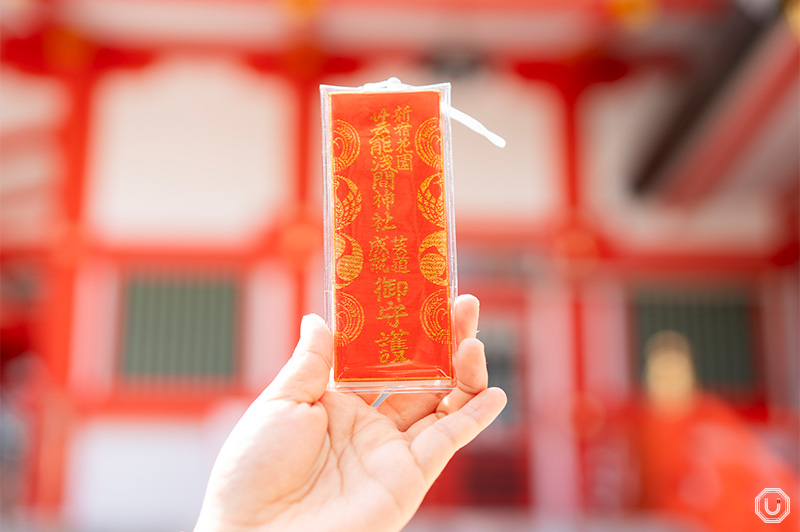
Geido Joju Mamori 1,000 JPY
The shrine’s goshuin (a special seal obtained from a Shinto shrine or Buddhist temple as proof of pilgrimage) are equally special. Alongside the standard design, the “Kirie Goshuin” features intricate kirie Japanese paper-cut artwork depicting the shrine surrounded by cherry blossoms in full bloom. It even comes with a clear plastic folder to keep it in pristine condition.
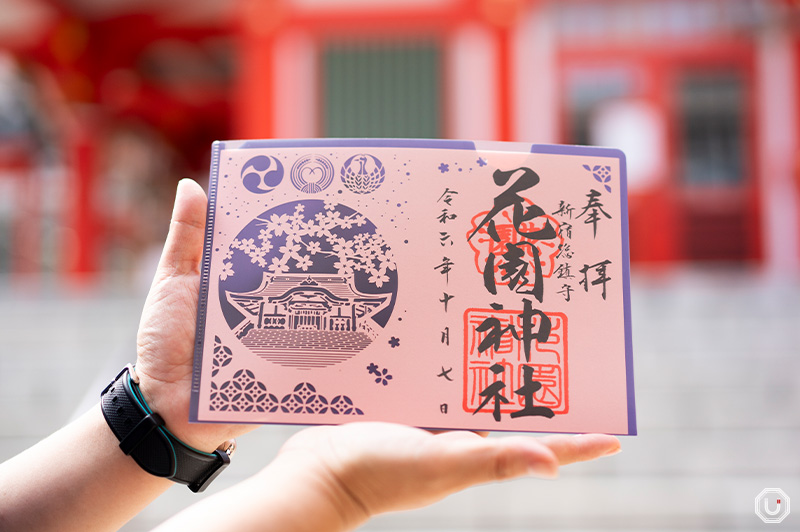
Kirie Goshuin seal 1,000 JPY
As for ema (wooden votive plaques on which visitors write their wishes, often leaving them on display at designated areas), there are three options: two featuring the zodiac animal of the year and one adorned with an Inari shrine motif featuring foxes, the messengers of the Inari god.
The ema on display at Hanazono Shrine often reveal heartfelt wishes from visitors worldwide, including messages for the success of idol groups and performers.
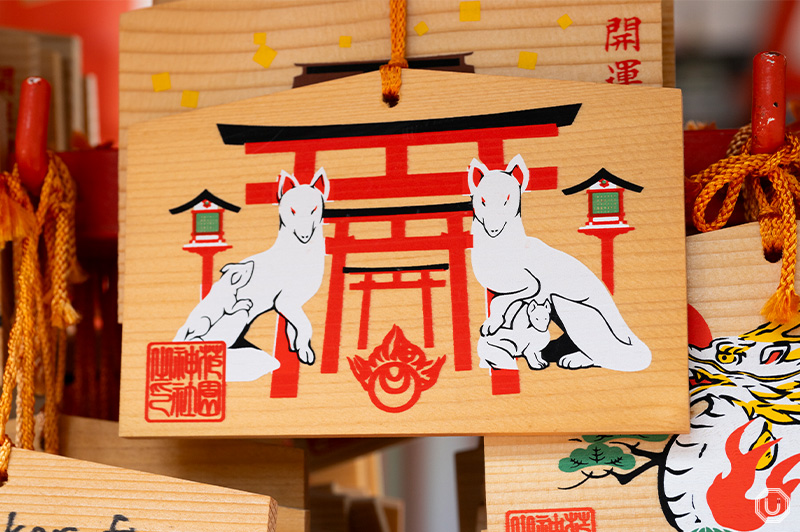
Ema 600 JPY
Hanazono Shrine offers a quiet, spiritual experience that feels worlds away from the nearby activity of Shinjuku’s famous entertainment district of Kabukicho. Next time you’re in Shinjuku, take a break from the busy streets and visit this serene and historic shrine.
Shrine Information
| Name | 花園神社 Hanazono Shrine |
|---|---|
| Address | 5-17-3 Shinjuku-ku, Shinjuku, Tokyo
|
| Access |
Shinjuku-sanchome Station 3-minute walk from Exit C3
Shinjuku Station(SJK) 7-minute walk from Shinjuku Station East Exit
|
| Phone number | 03-3209-5265 |
| Visiting Hours | 24 hours |
| Sacred Items | 9:00-20:00 May close earlier |
| Goshuin | 9:00-20:00 May close earlier |
| Omikuji | 9:30-16:30 |
| Admission fee | Free |
| Official website | http://hanazono-jinja.or.jp/ |
| Other information |
|
※The information in this article is current as of November 2024.
